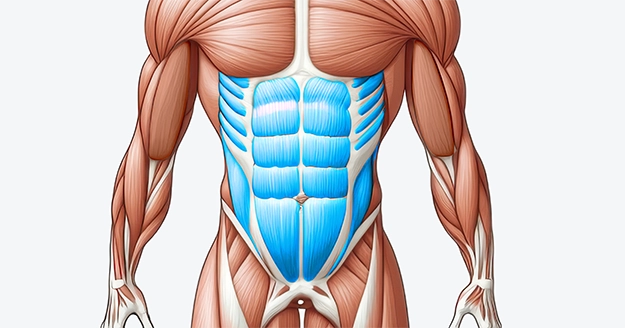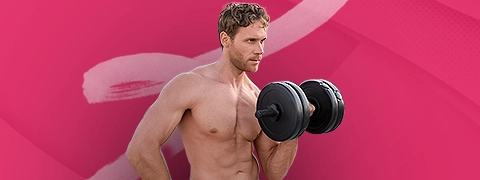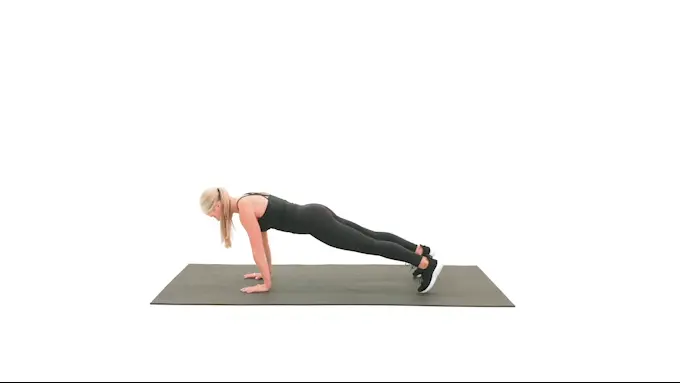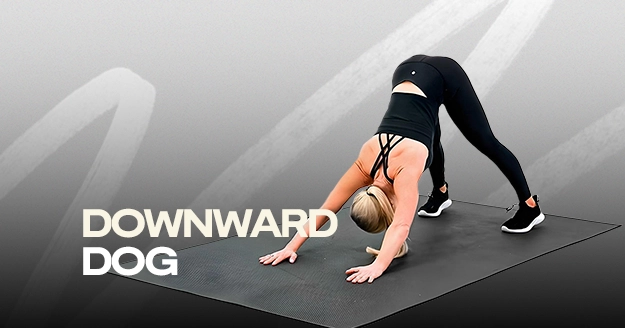Exercise Profile
Downward Dog Overview
The Downward Dog is a versatile exercise that strengthens and stretches the entire body. It engages the arms, shoulders, and legs while stretching the hamstrings, calves, and spine. This helps improve posture, balance, and flexibility.
The Downward Dog is a simple workout for beginners and people new to fitness. It helps build strength and flexibility and can be adjusted to suit your comfort level. For experienced individuals, use your core to deepen the position and pull your belly button toward your spine for added stability.
This simple exercise needs no equipment, making it a convenient option for boosting flexibility and strength. You can practice the downward facing dog position anywhere, providing a quick way to energize your body and boost your fitness.

Downward Dog Instructions
Step 1: Locate a flat, open area to get on all fours with your hands positioned around shoulder-width.
Step 2: While keeping your neck and back neutral, tighten your glutes and core in the plank position.
Step 3: Breathe as you raise your hips by standing on your toes to raise your glutes above the rest of your body. Lower your head while maintaining straight arms and back, forming an inverted “V” with your torso.
Step 4: For a short while, hold this position, then take a breath and bring your hips down to your starting position again.

Common Downward Dog Variations
Here’s a quick overview of common variations of the Downward Dog that can enhance your practice and highlight the benefits of downward dogs. These variations address various fitness levels and goals, help you deepen your stretch, build strength, or add variety to your exercise routine.
Downward Dog Tips
- Place yoga blocks beneath your hands to ease yourself into the posture if necessary.
- Don’t worry if your heels don’t contact the ground as you press them toward it; just focus on lengthening your spine.
- Maintain a shoulder-width distance between your hands and fingers for stability.
Downward Dog Common Mistakes
- Sinking Hips: Letting your hips sag instead of lifting them can strain your lower back and decrease core activation.
- Chin Tucking: Tucking your chin too much or hanging your head can strain your neck.
- Rounded Shoulders: Allowing your shoulders to collapse can cause unnecessary tension in the joint capsules.
Frequently Asked Questions
How can I modify Downward Dog if I can’t reach the floor?
Yoga blocks can be used as support beneath your hands if you cannot reach the floor or keep your knees slightly bent to lessen strain on your hamstrings.
Is Downward Dog suitable for beginners?
Yes, Downward Dog is beginner-friendly. To prevent tension, be mindful of your body and adjust as needed.
Are my heels supposed to be off the ground?
Yes, it’s normal for your heels not to touch the ground. Concentrate on lengthening your spine and lifting your hips instead of trying to force your heels down.
Post your post-workout selfies in IG and tag @trainestapp, #trainest, or DM them to us to get a shoutout on Trainest Stories!


